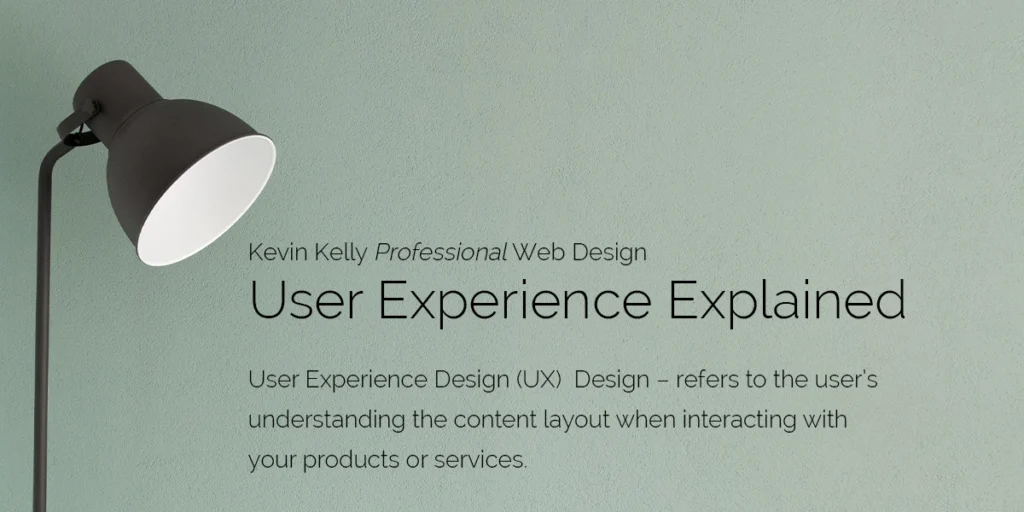
User Experience Design – or UX Design – refers to the user’s understanding of your content layout when interacting with your products or services.
Where Web Design tackles the look and feel of a website, UX Design provides a meaningful experience for users, involving distinct areas of product awareness, branding, usability, function, and design.
Good UX Design means the user (a potential customer) has no clue about the seamless experience. On the other hand, poor UX design often provokes outbursts such as “bloody website!” or variants to that degree, causing the user to leave the site in hopeless contempt.
It stands, then, that good UX design is crucial to impressing potential customers – especially when viewing your site on a mobile device.
“No product is an island. A product is more than the product. It is a cohesive, integrated set of experiences. Think through all of the stages of a product or service – from initial intentions through final reflections, from the first usage to help, service, and maintenance. Make them all work together seamlessly.”
— Don Norman, inventor of the term “User Experience.”
The UX design process is complex, especially for those unaware of its importance – or existence. Here are 7 simplified steps.
1. Map Out Your Customer’s Journey
Who is your customer? Who are your potential customers? What will their journey look like?
From decisive buyers to first-time browsers, knowing who your customers are and how they interact with your website across various sales stages is critical to creating better overall experiences that can increase engagement, brand loyalty and revenue.
HOW?
2. Consider The End-To-End Experience
What brought visitors to your site, and what will they want to do next? Considering the end-to-end experience puts in place mechanisms to cater for whichever route they choose.
For example, if you’re an author, visitors may want to know about your latest novel. They may like to learn more about your earlier works—perhaps they want to contact you. Better still, they want to purchase from you. Check out Robin Hawdon, for example.
Providing that information in a logical sequence with a straightforward approach creates a one-on-one experience between you and your customer.
3. Think Of The Website As A Storyboard
Think of a website as a storyboard where you are a guide to your visitors. Satisfy their needs by solving their current problem using your product or service.
If your business offers an underground cable location service, what information is the visitor looking for? Is it as basic as needing your phone number? Are they looking for reasons to use your specific service?
Add relevant graphics and actionable CTAs (calls to action) to account for any visitor requirement. Remember, it’s an experience you aim to provide, not just sharing content. Check out Aussie Dig Locator Services, for example.
4. Think Of The End Goal
Think about the end goal and reverse engineer each part of the buying journey with that in mind. Developing buyer personas and mapping their journey with the end goal in mind is a helpful exercise.
Not all websites are massive e-commerce behemoths. Most websites have less than 20 pages. Even 1 or 2 pages are all it takes to get your brand, service, or product out there.
A fast-food outlet selling astonishingly good burgers may need only one page to provide the end goal – information like location, open hours, and a menu. Check out Pearls Burgers, for example.
5. Follow Intuitive Consumer Guidelines
Technology is constantly evolving, making for new methods of finding information. Intuitive Consumer Guidelines will mean various things to different people, but understanding what technologies are current will aid significantly in attracting new visitors.
The old days of simply Googleing a keyword are long gone. Short-tail and long-tail keywords and entire phrases are still popular, but image and video searches, plus voice search, are even more popular.
The vast majority of the Western population still relies on Google to find relevant information. But the devices used are ever-changing – as are the platforms used. 54% of consumers primarily use phones to search [1]. On this fact alone, your site must, at all costs, work seamlessly on the smallest of screens.
6. Keep The UX Accessible
Keeping the UX of your website accessible means it remains easy to use. In terms of user experience, accessibility means a visitor can easily find the information they want in as few steps as possible. Forcing visitors to click on a link that takes them to another page is a surefire way to lose their attention.
Website accessibility can also refer to ensuring all elements are available to hearing and vision-impaired people—a discussion for a later article.
7. Focus On The Organisation Of Information
A successful user-centred design encompasses the principle of human-computer interaction. The keys are easy navigation, accessibility and credibility. Focusing on information organisation and structure so it’s easy to understand and consistent goes a long way when it comes to brand credibility and accessibility.
Is Good UX Design Good Enough?
The term good UX Design refers to best practices as set out by my explanations above. In truth, UX Design is only as good (and effective) as the person (or team) building it. The level of UX understanding is the first part of the equation. How to implement it effectively is the second.